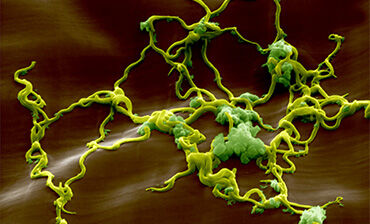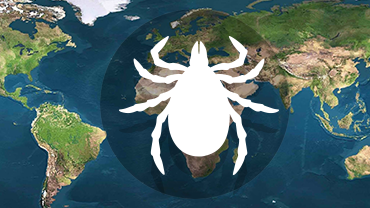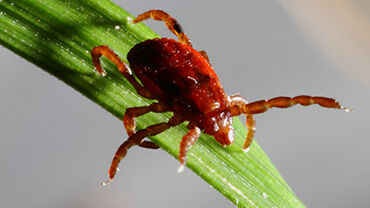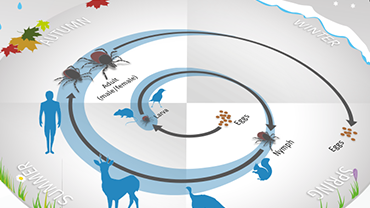Borreliosis (Lyme disease)

Lyme disease is a bacterial illness transmitted to humans through the bite of infected ticks. The disease is caused by bacteria in the family Borreliaceae, particularly Borrelia (Borreliella) burgdorferi s.l. Ticks become infected by feeding on animals that carry the bacteria in their blood.
Symptoms include:
- fever
- headache
- fatigue
- a distinct skin rash called erythema migrans.
This rash occurs in roughly 60-80% of infected people and usually starts at the site of the tick bite within 3-30 days. This rash slowly expands outward over several days.
Key facts
Risk for people
The bacteria are only transmitted by the bites of the ticks Ixodes ricinus and I. persulcatus (the former is common in most of Europe, the later in the Baltic countries and Finland). In the most affected regions tick infection rates may exceed 10%. These areas are mainly located in central Europe; however, in the last years, there is a spread of infected ticks toward northern latitudes (i.e. Scandinavia).
In most cases, Lyme disease can be effectively treated with a course of antibiotics. However, if left untreated, the infection can spread to the heart, joints and nervous system.
The most serious complication is a disorder that affects the central nervous system, called Lyme neuroborreliosis, which occurs in around 10% of cases. This disorder can lead to facial paralysis, inflammation of the layers protecting the brain and spinal cord, and pain in the nerve roots, which connect the spinal cord to the nerves.
How it spreads
Transmission of Lyme disease to humans occurs through the bite of an infected tick. The disease is unlikely to be transmitted within the first few hours after the bite, so removing ticks attached to the skin as soon as possible reduces the risk.
Vaccination and treatment
Currently, there is no vaccine available for Lyme disease. All patients with symptoms should be treated with antibiotics, although if severe tissue damage has occurred, recovery may be incomplete.
Protective measures
The main way to prevent infection is to avoid tick bites and the early removal of attached ticks.
Tick bites can be avoided by:
- wearing protective clothing
- using tick repellent
- checking the skin periodically, especially skin folds and the head
If a tick is found on the skin, tweezers should be used to carefully grasp the tick as close to the skin as possible. The tick should be gently pulled upwards to ensure no parts of its mouth are left behind. After the tick is removed, a disinfectant should be applied to the skin to prevent any infection.







